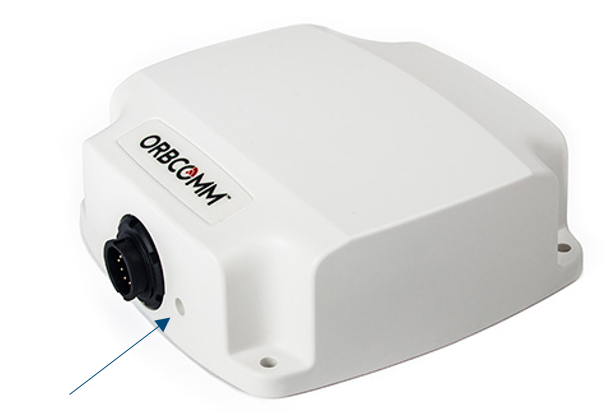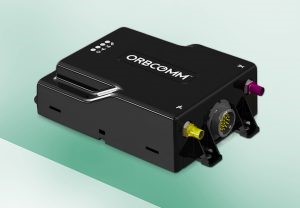Vessel Monitoring Systems (VMS)
VMS in Victorian commercial fisheries
VMS is required on vessels operating in the following Victorian commercial fisheries:
- Abalone
- Banded morwong
- Corner Inlet
- Giant crab
- Inshore trawl
- Ocean and dive scallop
- Ocean wrasse
- Octopus
- Rock lobster
- Sea urchin
- Western Port/Port Phillip Bay
Electronic monitoring is required in the following Victorian commercial fisheries:
- Eels
- Pipis
VMS and electronic monitoring devices contribute to ensuring the sustainability of Victoria’s marine resources and make the VFA a more efficient and effective fisheries management agency.
What VMS data does the VFA collect? Is VMS a vessel safety system?
VMS devices are used for the purpose of providing the VFA with information on vessel position, bearing and speed.
These devices are not designed to be a safety device and are not monitored for this purpose by the VFA or by any maritime safety agency.
What VMS devices can be used and what is the cost?
The VFA has selected the Orbcomm ST6100 and the Orbcomm ST9101 as its approved vessel monitoring device and has entered into a supply agreement with Design9 Pty Ltd.
Only ST6100 and ST9101 units purchased from Design9 are approved by the VFA. Please contact the VFA Commercial Licencing Unit (contact details) before purchasing a VMS unit from Design9.
Fishers can use devices that are currently authorised by AFMA for operating in Commonwealth fisheries if they are already installed on the vessel operating in the Rock Lobster, Giant Crab, Scallop (Ocean) or Trawl (Inshore) fisheries.
The VFA has provisionally authorised the following VMS units:
- Succorfish: Succorfish: western zone and central zone abalone fishery only and sea urchin fisheries if the vessel is also used in the abalone fishery
- SkyWave IDP690: Scallop Dive (Port Phillip Bay) or as a spare if provided by the VFA.
- Rockstar Rock seven: eel and pipi fishery and motorised tender vessels in the Corner Inlet fishery.
No other VMS units can be used in Victorian-licenced commercial fisheries.
The VFA will recover the airtime and AFMA service costs it incurs through annual licence levies.
A list of approved VMS devices and the conditions of their approval are found in the Approved VMS Instrument Order ![]() [MS Word Document - 68.1 KB]
[MS Word Document - 68.1 KB]
Who can install a VMS unit on a vessel?
VMS units must be installed in accordance with the manufacturer’s Terminal Installation Guide and the VFA VMS Installation and Maintenance Standard.
The VFA recommends that fishers engage a professional marine electrician to install their VMS device.
Orbcomm instructions ST6100 ![]() [PDF File - 648.6 KB]
[PDF File - 648.6 KB]
Registering a VMS device with the VFA
VMS devices must be registered prior to use..
Contact the Commercial Licencing Unit before installing and turning your VMS unit on for the first time (click here for contact details).
How can I tell if my VMS unit is working?
The Orbcomm ST6100 has an external LED that flashes when power is applied:
- twice every 30 seconds while the device is connecting to the satellite
- four times when the connection is established
- once every 30 seconds when the device is working

Position of LED on ST6100 device indicated by arrow. Note that some devices have the black cable connector on the bottom
An external LED can be installed if the in-built LED is not visible from the wheelhouse or vessel working area. This LED will:
- begin flashing about five seconds after power is connected
- flash once per second while the device is connecting to the satellite
- be lit continuously once the satellite connection is established.
Wiring diagram for external LED:

The Orbcomm 9101 has external lights when operational;

Red light = powered
Yellow light = connected to satellite
Green light = connected to cellular
What if my VMS is not working?
The VFA has prepared regulatory guidelines to assist fishers to understand how it will enforce the VMS regulations.
You should contact the Commercial Duty Officer immediately if you suspect that your VMS device is not working.
Regulatory Guideline 4: Vessel Monitoring Requirement ![]() [MS Word Document - 411.8 KB]
[MS Word Document - 411.8 KB]
VMS unit is not operating before leaving port
Fishers whose VMS units are not working while in port should contact the Commercial Duty Officer before leaving on a fishing trip.
The Commercial Duty Officer will authorise the operator to undertake a fishing trip if the installed VMS unit is not fully operational if satisfied that there are special circumstances to justify the authorisation. The Commercial Duty Officer will consider special circumstances apply if satisfied that:
- a replacement unit is not available and or cannot be registered with VFA Licensing Commercial Licencing during business hours;
- the unit was installed correctly;
- the fisher has taken reasonable steps to have the device repaired or replaced at the next opportunity; and
- the operator is low risk (i.e. has a history of compliance).
Detailed information is found in the Regulatory Guidelines ![]() [PDF File - 394.3 KB].
[PDF File - 394.3 KB].
VMS stops working while I am at sea
If a fisher becomes aware that the VMS unit on their vessel has ceased working during a fishing trip, they must immediately contact the Commercial Duty Officer.
The Commercial Duty Officer will grant approval to continue fishing if satisfied there are special circumstances justifying the granting the approval. The duty officer will consider special circumstances apply if satisfied that:
- the unit was operating prior to the boat leaving port; and
- the operator is low risk (has a history of compliance).
Detailed information is found in the Regulatory Guidelines. ![]() [PDF File - 394.3 KB]
[PDF File - 394.3 KB]
Conditions of authorisation to operate without a fully operational VMS
Where the Commercial Duty Officer grants an authorisation to engage in fishing activities with a VMS unit that is not fully operational, they will impose conditions on the authorisation, including that:
- the operator only undertakes fishing activities within areas specified;
- the fisher manually reports their position by SMS on specified timeframes; and
- the fisher provides a pre-landing notification by SMS.
Detailed information is found in the Regulatory Guidelines. ![]() [PDF File - 394.3 KB]
[PDF File - 394.3 KB]
Requirement to specify and maintain method of communication on board a vessel
The Fisheries Regulations regulation 472 require that fishers have onboard the vessel a mobile or satellite phone that the VFA can call at any time that it needs to communicate with the operator when they are on the boat and acting under the licence.
Approved Communication Device Order ![]() [PDF File - 426.1 KB]
[PDF File - 426.1 KB]
After the VMS unit is installed, and at least 5 business days before the boat is used for fishing, the licence holder must inform the VFA in writing on the approved communication notice of the telephone number.
Communication Notice ![]() [MS Word Document - 3.4 MB]
[MS Word Document - 3.4 MB]
The completed communication notice should be sent to:
Licensing & Quota Services
Victorian Fisheries Authority
PO Box 4509
Melbourne VIC 3001
Email: commercial.licensing@vfa.vic.gov.au
The notice must include the name of the responsible person (operator), registration number of the boat that the VMS system is installed on and the telephone number of the approved communication method.
The nominated operator must make all reasonable efforts to respond in a timely manner to communications from the VFA. When the nominated operator is engaged in dive fishing, they must ensure the mobile phone is monitored by a deckhand.
Can I move VMS units between boats?
Fishers must provide the VFA with the name and registration details of the new vessel that the VMS unit will be installed on.
This information must be provided to the Commercial Licensing Unit during business hours and at least 48 hours before the next fishing trip commences.
What if I want to use my boat for other purpose such as recreational fishing?
The regulations require VMS units to be operating when the boat is operating in a fishery for which VMS is required.
An operating VMS is not required when the vessel is being used for other activities, such as maintenance or recreational fishing.
How will the privacy of my data be protected?
The VFA respects the privacy of commercial fisher’s data and treats this information as confidential. Individual’s information collected is used for compliance and fisheries management purposes and is shared only with external agencies under strict conditions and in accordance with the Fisheries Act 1995.
There are strong legal protections under the Fisheries Act 1995 to prevent unauthorised access to or divulging of this information.
AFMA follows and implements measures to counter cyber security threats as directed by the Australian Cyber Security Centre, a division of the Australian Signals Directorate, and has regular independent security audits to ensure its cyber security stays strong and up to date.
All VMS data is stored in Australia at a facility which meets strict Commonwealth government security standards.
VFA Contact details
If you have any questions about the VMS system or administration including registering a VMS unit on a vessel | Commercial Licensing Unit (business hours) | 1800 620 896 (Option 2) |
If your VMS is not working and you are seeking approval to manually report during your fishing trip | Commercial Duty Officer (24 hours) | 0418 519 215 |
